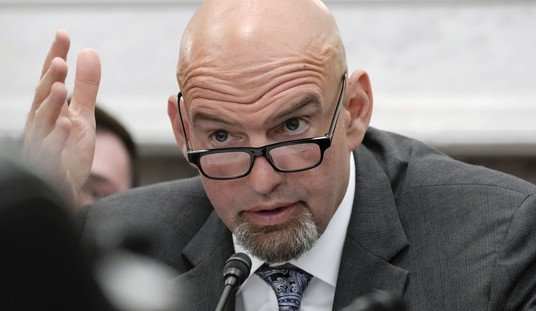My headline is a little snarky, but actually I think Washington Post fact-checker did the right thing here. This all started when Transportation Sec. Pete Buttigieg made a comment about highway overpasses in New York being built too low to allow buses of minority children to reach the beaches. Buttigieg was mocked for the claim but Kessler pointed out on Twitter that the underlying claim came from a Pulitzer Prize winning book:
This is detailed at length in Robert Caro's Pulitzer Prize-winning book on Robert Moses, "The Power Broker." See especially pages 318-319: "He began to limit access by buses; he instructed Shapiro to build the bridges across his new parkways low — too low for buses to pass."… https://t.co/QmgpxU6Lag
— Glenn Kessler (@GlennKesslerWP) November 8, 2021
And as Fox News points out today, Philip Bump was also quick to jump to Sec. Buttigieg’s defense:
Washington Post national correspondent Phillip Bump also rushed to Buttigieg’s defense, writing an analysis mirroring Kessler’s tweets headlined, “And this is why it’s useful to talk about historical examples of institutionalized racism,” which claimed the transportation secretary’s remark “served as an opportunity not only to elevate the specific story to which he was referring but the utility of educating Americans about a complicated history of systemic racism.”
Bump reiterated that Buttigieg was referring to a story from Caro’s book, which described a decades-old plan to stop Black people from visiting a beach in New York by making it difficult for buses to access the parkways.
Bump complained Buttigieg was mocked for his remark and enlisted left-wing historian Kevin Kruse to explain that many American highways were designed to keep Black and White neighborhoods separated. Bump even boasted that Kruse’s work was part of The New York Times’ controversial “1619 Project,” and Kessler added Bump’s article to his Twitter thread defending Buttigieg.
The easy thing to do at this point would have been to let it ride. Instead, Kessler did something that’s always difficult to do: He went back and looked at the story more carefully and essentially fact-checked himself.
As he explains, the underlying story is about Robert Moses, the man who designed highways and bridges that cross New York City. In 1929, Moses built Jones State Beach and also constructed the parkways that allowed people to travel there. His close associate was Sidney Shapiro who became a major source for a famous book criticizing Moses. Shapiro claimed that Moses ordered him to construct overpasses such that buses full of black people could not easily visit Jones State Beach and other parks. But as Kessler explains, that portion of the book has recently been scrutinized.
At the peak of his influence, Moses was more powerful than any mayor or governor, even though he was not elected. Caro’s book, published in 1974, is mostly a study of power and how power corrupts, depicting the transformation of an idealist reformer into a tyrant who created slums and destroyed communities without remorse. The 1,200-page book, a feat of astonishing reporting and writing, is generally regarded as one of the 100 greatest works of nonfiction. It destroyed Moses’s reputation and shaped how people think about his legacy…
But since “The Power Broker” was published, as always in history, there has been some revisionism and Moses’s achievements are now viewed in a better light. In particular, the anecdote about the parkway bridges has been increasingly questioned, along with other details in Caro’s book.
Bernward Joerges, a German professor of sociology, in 1999 carefully examined the saga of the bridges. In an essay, he acknowledged Moses was an “undemocratic scoundrel” and a “structural racist” but argues that all parkways at the time had low bridges.
“How, then, should one understand that Moses built some 200 overpasses so low?” he asked. “U.S. civil engineers with whom I have corresponded regularly produce two simple explanations for the rationality of the low-hanging bridges: that commercial traffic was excluded from the parkways anyway; and that the generally good transport situation on Long Island forbade the very considerable cost of raising the bridges … Moses did nothing different on Long Island from any parks commissioner in the country. … In sum: Moses could hardly have let buses on his parkways, even if he had wanted differently.”…
Kenneth T. Jackson, a Columbia University historian who has said that generations of his students have failed to confirm episodes in Caro’s book, also says the overpass story is not true.
“Caro is wrong,” he wrote in an email. “Arnold Vollmer, the landscape architect who was in charge of design for the bridges, said the height was due to cost.” He added: “Also, you can still get to Jones Beach by train and bus, as you always could.”
There’s more. A Cornell historian named Thomas Campanella says he measured the overpasses on the Southern State Parkway and found they were somewhat lower than other overpasses built at the same time. He believes the story about Moses ordering them to be built lower is true. But Peter Schulman, a professor at Case Western University points out that in practice the differences wouldn’t have mattered since even the highest overpass heights at the time would have been too low for buses. In other words, unless the overpasses had been made higher than was normal at the time, buses still wouldn’t have been able to pass.
Kessler concludes that the truth of the story is not “easily resolved” but that the conclusion that overpasses were built lower to keep minorities away from beaches, despite coming from a Pulitzer winning book, is in some doubt.
Again, I think Kessler deserves credit for refusing to go with the flow here and instead pointing out that there’s a debate about all of this even among historians who have studied it closely.







Join the conversation as a VIP Member